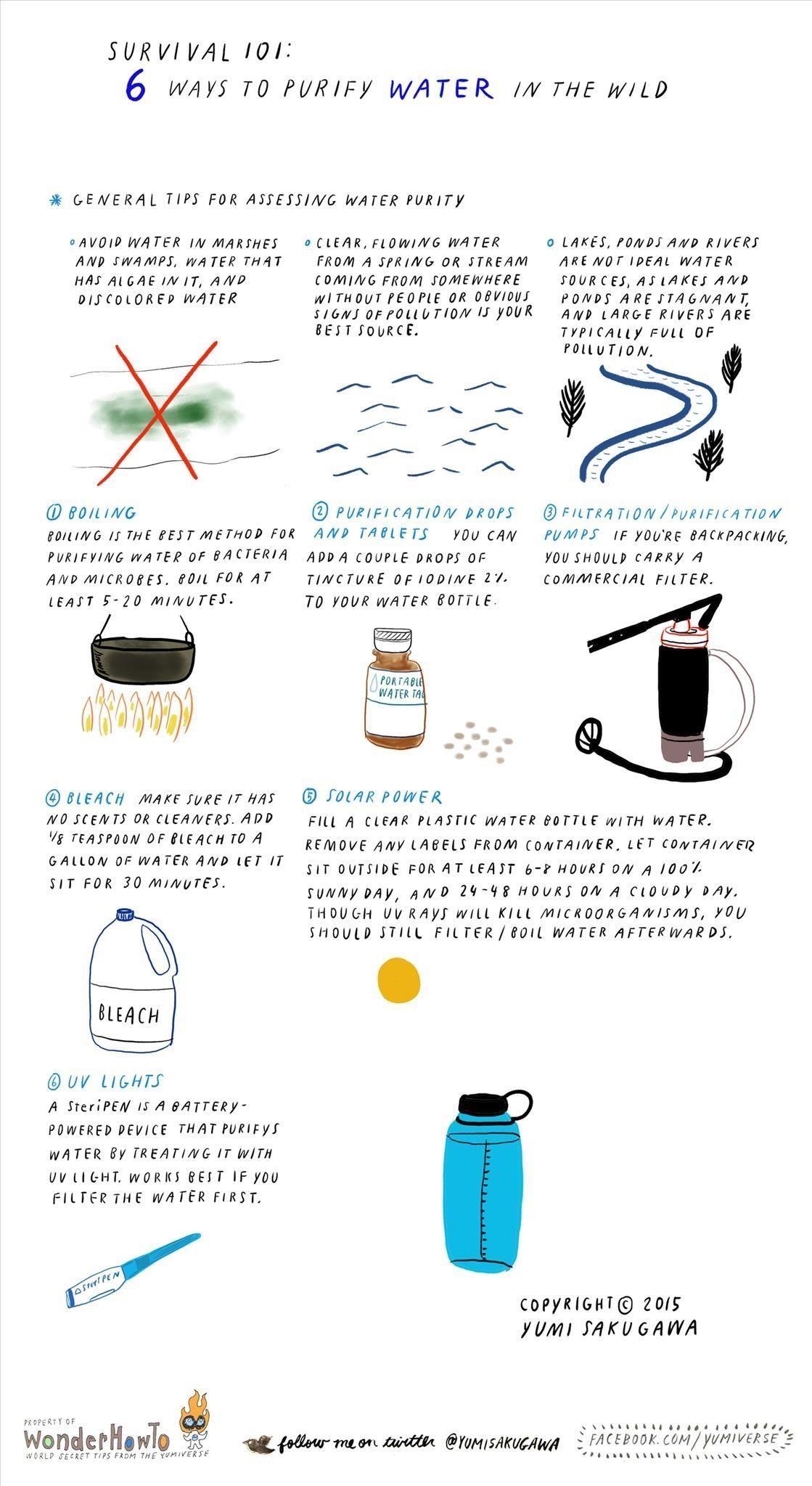Water. The elixir of life that is essential to creating food, oceans, plants, animals, and humans. We’re made up of a large percentage of water and we can’t go three days without it. So knowing how to purify something that is 100% necessary for survival is an essential skill.
ContentsAside from the improved taste, smell, and appearance, purifying water removes contaminants like waterborne arsenic, endocrine disrupters, selenium, and manganese. Drinking purified tap water is also better for the environment, as it helps to reduce pollution from plastic bottles, as well as environmental costs. Long-term consumption of bacteria-laced water could also cause health issues such as cancer, nervous system effects, and gastrointestinal illnesses.
But where should you start? What are some of the best methods to purify water and is it possible to do so outdoors? We’ve got all the answers, and more, below!
Related Survival Guides
What Are Some Methods To Purify Water?
There are a wide variety of options for purifying water. Some cost next to nothing, and others require a little bit more dough. Here are some of our favorites:

Filtration
This process involves taking those solid particles from water and removing them via a filter medium. Think of it as straining the particles from water, similar to straining water from pasta with a colander. Filtration shines when it comes to removing tiny compounds like pesticides, and it’s considered very affordable since most of the water is retained during the purification process. Examples of this type of method include ion exchange, mechanical, and absorption filters.
Chlorination
Chlorine has been around for a while, and it’s pretty effective against parasites and microorganisms. Chlorine tablets are typically used, but be sure to contact your doctor first if you have a thyroid condition. Tablets should also be used in heated water so they dissolve better. To purchase one of these water purification products, check out your local hardware store or an online giant like Amazon.
Boiling
This is by far the cheapest method for purifying water and all you need is a heat source and a metal vessel, like a teapot. You have to wait for the water to reach a rolling boil and then cool down before you drink it, but this is a great way to purify water from almost any source when no other option is available.
Reverse Osmosis
Did you know you can use reverse osmosis to purify saltwater for consumption? Not only that, but this process also removes lead, viruses, bacteria, and a whole lot of other contaminants. It’s a bit complicated but in layman’s terms, reverse osmosis is made up of three canisters: A membrane and two carbon filters. The pre-filtration step gets rid of large sediments using the first carbon filter. The second step forces water through the membrane using pressure (contaminants are left behind). Finally, the filtration step involves water passing through the second carbon filter where any excess contaminants are removed. Reverse osmosis units are expensive to purchase, but worth it if you want ultra-clean water.
Note: Distillation is another method for purifying water, but we don’t recommend it since it removes essential minerals.
What Is the Most Effective Way To Purify Water?
This entirely depends on where you are, how much money you’re willing to spend on a water purification system, and how much time you have. For some people who are out in the middle of nowhere, boiling water using fire and a kettle is not only their most effective method, it’s the only method! For others, they might prefer shelling out hundreds of dollars on a fancy reverse osmosis system which is very effective for purifying water. As long as the method removes contaminants from your water, whether it’s through boiling, chlorination, or filtration, then it gets our stamp of approval for being an effective method.
How Can We Purify Water Outdoors?
Let’s say you’re camping in the woods and forgot to bring one of the most important things: Water. Well, don’t worry, because you can collect water from sources like streams, ponds, lakes, and even dew to purify for consumption.
As mentioned earlier, boiling is a surefire method to purify water in the wild and all you need is a heat source and a metal container like a teapot. For a quicker method, try using ultra-violet light, otherwise known as a UV filter. The lightbulb helps to kill off impurities in your water bottle, making it safe for consumption (but be careful, as it doesn’t remove sediments). You can also use water disinfection tablets, as well as a wide variety of portable water filters like a pump-action one or a drip/suction filter. For these types of water filters, you’ll get roughly a quart of water per minute.
If you have absolutely zero equipment in the wilderness, you can always rely on the sun to disinfect your water. This is known as “SODIS,” and it’s completely free and easy to remember. Just put a plastic bottle of water in the sun and wait 24 hours. That’s it. Though there might still be some lingering bacteria in the water, the sun’s UV light does a great job of eliminating most biological hazards, making this an effective DIY water purification method. (Two quick and important notes regarding this: the sun doesn’t kill off chemical contamination and you’re going to need sunny weather for this to work.)
So remember, when it comes to purifying water, you have lots of options to choose from depending on your location and budget. Just be sure to choose a method that you feel comfortable with and ultimately, one that you’ll use on a consistent basis for a healthier and happier you.
